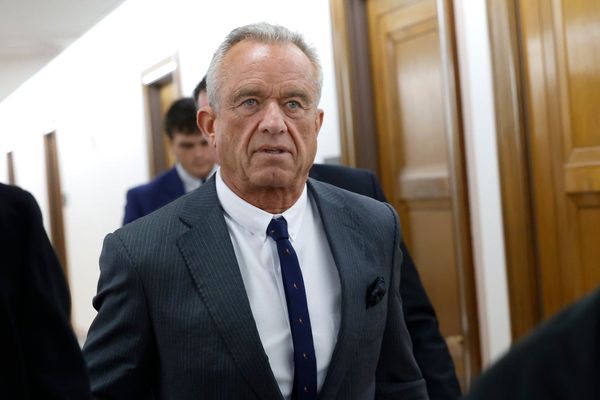
One of the central messages U.S. Vice President Kamala Harris took to Central America was controlling corruption was key to improving the region’s economies and reducing migration. “We must root out corruption wherever it exists,” Harris lectured government officials, including Guatemalan President Alejandro Giammattei. U.S. special envoy to the region, Ricardo Zúñiga, emphasized the point earlier, saying, “we see corruption as one of the most important root causes [of migration] to be dealt with.”
The vice president and U.S. State Department are in good and plentiful company in focusing on the corrosive, economically distorting impact of corruption. Multilateral banks, think tanks, civil society organizations, and a raft of studies have generated a growing anti-corruption industry dedicated to tracking, measuring, reporting on, and denouncing the evils of public and private rent-seeking.
Given all the hype, no one could be blamed for believing corruption is the fundamental factor for poverty, inequality, and underdevelopment. But despite urgency and clamor of the anti-corruption movement and exhortations from the north, when it comes to the actual drivers of underdevelopment, corruption is not the central factor.
Compared to many of the basic factors believed to drive or stall development, corruption is likely relatively small (although dirty) change. Far bigger issues are the wildly skewed distribution of land and wealth, economic exclusion, racism, dependence on commodity or low-tech exports, informal economies and their workers, and the growing inequality caused by the concentration of capital wealth versus production. Many of these factors were studied intensively and formed the basis for development programs in the 1960s and 1970s. In those decades, they led to massive land redistribution programs in places like Taiwan and South Korea.
In contrast, there are few rigorous studies comparing corruption to other, better understood factors. As the Massachusetts Institute of Technology economist and Nobel laureate Abhijit Vinayak Banerjee wrote in 2008, we are only starting to develop sufficient comparative data on the macro effect of corruption on economic growth and development. (And it is worth noting that China, one of the biggest success stories of development and poverty alleviation in modern history, is hardly a paragon of public transparency and integrity.)
Sure, finger wagging at eye-popping stories of venality may make observers feel good—even morally superior—and provide political talking points, but in the end, development and the sort of opportunity the Biden administration seeks to achieve in Central America does not primarily hinge on tackling corruption. That will depend on a more balanced distribution of resources, countries’ factor endowments (such as their transportation networks, levels of education, and arable land), and state policy.
Whether it’s the World Economic Forum’s (WEF) Partnering Against Corruption Initiative, the WEF’s The Future of Trust and Integrity project, Transparency International’s Corruption Perceptions Index, or the World Bank’s anti-corruption initiative “Reaffirming Commitment to a Development Priority,” in recent decades, corruption has come to be seen as one, if not the, major drag on economic development within the anti-corruption industry. A recent Atlantic Council report on Ukraine even posed the question as a binary dilemma: “Ukraine’s choice: corruption or growth.” Concerning Central America, a Bloomberg article published shortly after Harris’ trip to the region estimated that corruption cost the migrant-sending countries of the Northern Triangle (Guatemala, El Salvador, and Honduras) $13 billion or more than 5 percent of GDP growth.
That’s all perhaps true. But GDP growth—although important—is not the same as the sort of development that provides broad-based employment and opportunity.
The question really is what type of growth it is and how it is distributed. As we have seen in the last decade, GDP growth—particularly in countries with structural inequality—does not lift all boats and may even add to inequalities in wealth and resource distribution. Although economic growth is essential to development, reducing migration incentives requires building broad-based opportunities.
A 2009 review of decades of literature by Christophe Ehrhart concluded that of all the forms of inequality, land inequality—often underestimated in studies—is a “significant and negative determinant of the future growth rate” and, by implication, broad-based economic growth. The Northern Triangle countries that have been the target of corruption lecturing are marked by huge inequalities in land access. Guatemala remains the most land unequal country in the subregion with already some of highest skewed land distributions in the world. In a country where half of the population lives in rural areas, 1.86 percent of Guatemala’s population owns 52 percent of arable land. Among its neighbors, Guatemala has a land distribution Gini coefficient of 0.84—where 0 represents complete equality and 1 complete inequality. El Salvador’s land Gini coefficient stands at 0.81 despite major land redistribution programs in the 1980s and 1990s. Costa Rica’s figure is the best in the region at 0.67, which still compares unfavorably to a 0.57 coefficient for Europe, 0.56 for Africa, 0.55 for Asia, and 0.65 globally.
Of course, corruption undermines the capacity of states to collect progressive income taxes, effectively target social assistance, and create functioning market economies. And there are some important things the United States and other donors should continue to do to combat corruption. One has just occurred. In July, Washington published the names of 55 current and former public officials in Central America with ties to corruption, the so-called Engel List, named after former chairperson of the House of Representatives’ Foreign Affairs Committee, Eliot Engel. Similarly, individual investigations by the U.S. Justice Department of criminal corruption and narcotics trafficking cases (as occurred with the Odebrecht scandal) have resulted in targeted sanctions that freeze individuals’ U.S. bank accounts and rescind their U.S. visas. More proactively, in May, the U.S. Senate passed the Strategic Competition Act to work with governments to adopt and train officials in the Organisation of Economic Cooperation and Development’s landmark anti-bribery convention.
All of these are powerful tools to address specific cases of graft and prevent international businesses from engaging in bribery. But at a certain point, reducing every problem to corruption—from economics to politics to security—washes away its explanatory and prescriptive power. If everything stems from corruption, then addressing corruption must come to include everything—which means nothing, in practice.
To be sure, Harris’ emphasis on corruption is certainly understandable from a political perspective. After decades of mismanaged development assistance and endless tales of corruption affecting high-level political figures in Central America, Harris had to publicly warn and chastise governments to make the case at home for the $4 billion in assistance the Biden administration is proposing for the region.
Indeed, even just the recent cases are enough to give any U.S. taxpayer—let alone a Republican senator—pause. To name a few: Former Guatemalan Vice President Roxana Baldetti and disgraced former Guatemalan President Otto Pérez Molina were implicated in a customs kick-back scheme; former Salvadoran President Antonio Saca was involved in embezzlement and money laundering; and Honduran President Juan Orlando Hernández’s brother (and former Honduran senator) Juan Antonio Hernández was convicted for cocaine trafficking. Juan Orlando Hernández is alleged to have knowingly accepted campaign contributions from narcotics traffickers.
Not included in those lists are lower-level examples of kick-backs for medical equipment and favoritism in the distribution of lucrative public positions. Guatemala and Honduras even moved to shut down anti-corruption bodies—the United Nations-backed International Commission Against Impunity in the former and the Organization of American States-backed Mission to Support the Fight Against Corruption and Impunity in the latter—once their anti-graft prying started to cut too close to the political and economic class.
Given all this, it is not surprising the administration would want to beat the anti-corruption drum as it prepares to shell out billions of dollars. And beyond that, ensuring transparency in the management and oversight of U.S. development dollars is the only way to ensure well-intentioned and targeted assistance has its desired impact. But a full-court press on corruption and economic assistance isn’t going to have the desired impact of economic growth and eased migration pressures alone. Attention to broader structural issues, such as resource distribution, is required.
And when the World Bank, the World Economic Forum, and governments like the Biden administration aggressively push the anti-corruption agenda, they risk distracting donors, governments, and technocrats from other more tested, proven factors associated with socioeconomic development. Arguably, that could be the point. It’s far easier for everyone in the world’s developed-country capitals to cluck over corruption than tell some of their interlocutors they need to focus on giving up their wealth instead.
And there’s another reason focusing on anti-corruption as the answer to underdevelopment risks is becoming a dangerous red herring. The sad truth is there are few real successes when a country has dramatically purged its public and private sector of corruption. In the early 1990s, many held up the case of the Mani pulite (“clean hands”) judicial campaign in Italy that investigated an organized network of kick-backs between politicians and businesspeople. The fallout eventually led to the dissolution of the Christian Democracy and Italian Socialist parties and, in turn, led to the rise of new parties riding a wave of popular disgust with corruption and the political class. However, corruption continued; Mani pulite removed individuals that had taken advantage of the loopholes in Italy’s layered and intricate bureaucracy but did not secure deeper institutional reforms. Other corruption scandals soon followed, as in the 2014 Mafia Capitale scandal, involving Rome’s city government and violent criminal networks. Even today, perception of corruption in Italy continues to increase; 34 percent of Italians believe corruption rose in 2021.
The case of Italy is instructive for another reason. So far, those who have benefitted the most from anti-corruption fever have been the populists, many of them with little interest in actually rooting out the problem and, in fact, often increasing it several fold while consolidating power. In Latin America, that list includes former Venezuelan President Hugo Chávez, Venezuelan President Nicolás Maduro, Brazilian President Jair Bolsonaro, Mexican President Andrés Manuel López Obrador, and, more recently, Salvadoran President Nayib Bukele.
So before joining in the heavenly choir denouncing corruption as a curse that dooms development, observers should develop more sophisticated comparative analyses of how corruption stacks up to other socioeconomic problems. In the meantime, politically speaking, be careful what you wish for; the knight in shining armor who rides the wave of anti-corruption sentiment may not be all that honest.







